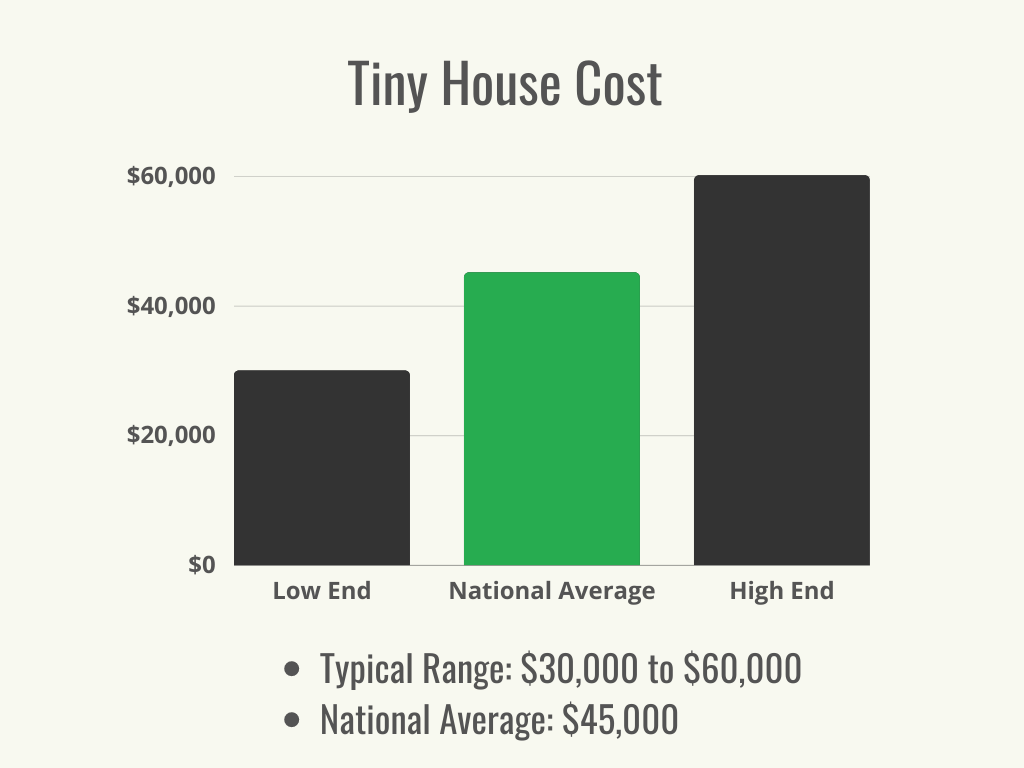

We may earn revenue from the products available on this page and participate in affiliate programs. Learn More ›
Highlights
- The typical range for the cost of a tiny house is $30,000 to $60,000, with a national average of $45,000.
- Tiny-house costs can vary based on factors like house size, type, brand, foundation construction, material type, labor and permits, utility access, and HVAC installation.
- The benefits of owning a tiny house include financial savings, fewer cleaning requirements, greater mobility, and sustainability.
- There are tiny-house kits for sale that can make for an accessible building project for an ambitious DIYer; however, building a tiny house from scratch requires advanced construction, electrical work, and plumbing skills that may be best left to a professional.
Those looking to downsize their living space or drop out of a fast-paced life are turning their focus to tiny houses. After all, they offer a lot of benefits, including less room to collect clutter, less time required for cleaning, and sustainability. But how much does a tiny house cost? According to Angi and HomeAdvisor, tiny-house costs range from $30,000 to $60,000. The national average is about $45,000, approximately in the same price range as a luxury car. The exact cost will depend on whether the customer chooses a prefabricated tiny house or a custom one.
Many tiny houses are built on trailers, making them akin to campers, but they’re designed to be primary residences rather than holiday abodes. These are among the least expensive, and a budget model could run as little as $4,000. A few tiny houses are built on permanent foundations, just like traditional homes, and these are often pricier—and come with added fees and regulations. A high-end custom tiny house on a foundation could tip the scale at $180,000 or more. Ahead, homeowners will find out the factors involved in the overall cost of a tiny house.
Factors in Calculating the Cost to Build a Tiny House
Just as the traditional cost to build a house will vary depending on several factors, so can the average cost of a tiny house. Those wondering “How much does it cost to build a tiny house?” will need to consider the size of the tiny house, its design, and its foundation setup. Additional factors include the possibility of needing permits and inspections, as well as the cost of the materials and appliances.
House Type
Tiny houses come in two main types: One type is portable and constructed on a trailer, and the other is permanent and built on a traditional foundation. According to Justin Draplin, founder and CEO of ECLIPSE Cottages, “Mobility is the primary advantage of tiny homes on Wheels (THOW). This allows you to relocate and explore different areas based on your preferences and needs.” Portable tiny houses are more common because they don’t have to meet the minimum square footage requirements usually required in conventional developments. They are also quite heavy and will need a trailer that’s beefy enough to support their weight. Customers can expect to pay an additional $4,500 to $9,000 for a suitable trailer. Tiny houses on trailers are considered “personal property” and are not subject to real estate property taxes, but they may be subject to other taxes.
“The biggest issue THOW buyers and owners find is that it is easier to find a place to park these if you have land or can find a tiny-home village in a desired area,” says Draplin. This is why some homeowners may find it preferable to opt for a tiny home on a foundation. Tiny houses on foundations are treated as conventional homes and taxed at the same rate by the local tax assessor’s office. Tiny houses on foundations will incur several additional costs, including the price to construct the foundation, which typically adds about $5,000 to $8,000 or $4 to $7 per square foot to the cost. There are even some tiny-house villages popping up where buyers can purchase a home in a neighborhood of other tiny houses. Tiny-house owners may also face additional community costs like homeowners association (HOA) fees, depending on their location.
House Size
The size of the tiny house is a significant factor in calculating the overall cost. No matter what type of house is being constructed, whether it’s conventionally sized or tiny, average costs run about $200 to $400 per square foot. Strictly speaking, small dwellings are considered “tiny” if they do not exceed 400 square feet of living space, and some can be as small as 60 square feet. If that’s too restrictive, customers may want to consider a traditional small home, which is defined as being less than 1,000 square feet. The chart below shows the average cost of a tiny house based on its size.
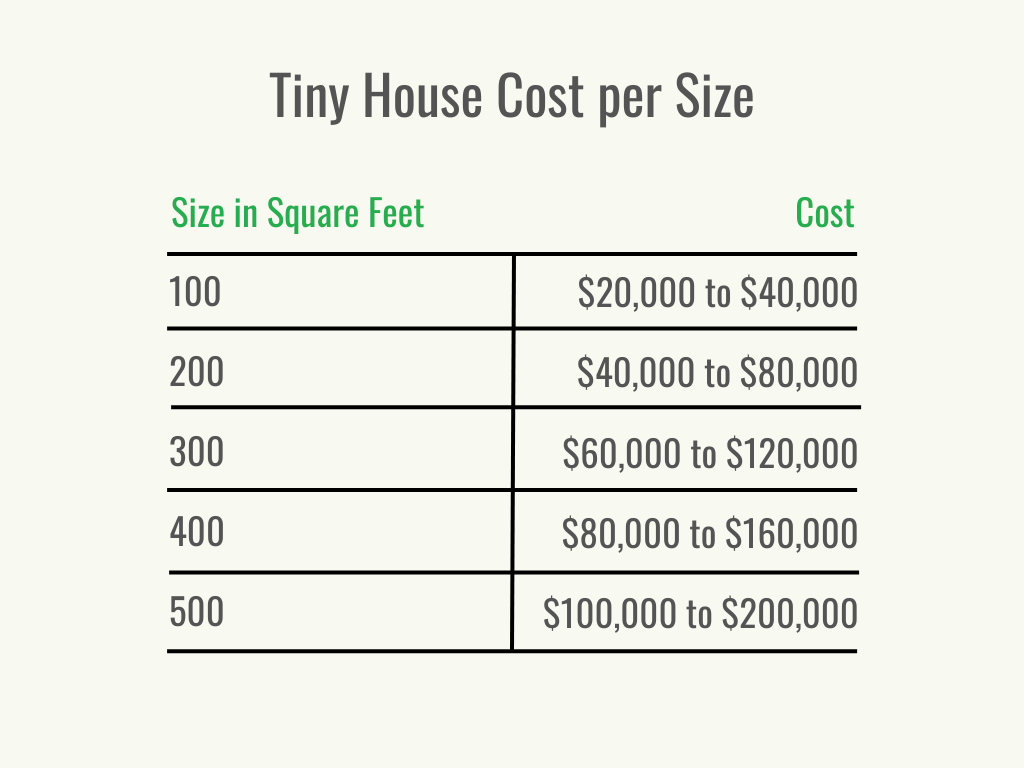
House Brand
Whether customers are opting for a custom-built tiny home, prefab house, or a tiny-home kit, there are a variety of brands to choose from depending on budget and style. Chattanooga and Volstrukt are popular brands with relatively low prices at around $15,000 to $25,000. On the other hand, Clayton tiny-home prices can be as high as $100,000 to $200,000. It’s important for a customer to pick a company that offers the desired service. For example, Chattanooga is a company that produces frames or kits that the buyer can build on to, so these kits would not be a suitable choice for someone who wants to purchase their tiny home move-in ready. Not all tiny-home brands operate nationwide, so it’s also a good idea for the customer to confirm that a company works or ships locally. Those who are not sure where to buy a tiny house may want to consider some of the best tiny-house builders on the market. The following table shows the cost ranges for several popular tiny-house brands.
| Tiny-House Brand | Cost |
| Barnwood Living | $20,000 to $80,000 |
| Chattanooga | $15,000 to $25,000 |
| Clayton | $100,000 to $200,000 |
| New Frontier | $75,000 to $100,000 |
| Timbercraft | $51,000 to $124,000 |
| Tumbleweed | $56,000 to $105,000 |
| Volstrukt | $15,000 to $25,000 |
| 84 Lumber | $20,000 to $80,000 |
Foundation Construction
Constructing a foundation for a tiny home will vary in cost from around $5,000 to $8,000 or more. In general, a tiny house built on a foundation will run $35,000 to $68,000, although costs could go much higher. To pour a foundation, the tiny-house owner will also need to purchase the lot or land, which can add substantially to the final cost and is something tiny-house fans might not initially consider.
Material Types
While tiny or very small houses are designed to offer the same amenities as conventional homes—albeit much smaller—materials and appliance choices will affect the price. Materials alone range from around $14,050 to $54,800, and some of the price difference is due to special-sized appliances, including scaled-down refrigerators, stoves, and showers. While smaller, these specialty items often cost more than standard-size ones. While building materials may have the same cost per square foot as for materials in a full-size home, smaller quantities will mean the overall cost will be less. For example, tiny-house owners will pay the same per square foot for house siding costs, but they will need to purchase only a fraction of the materials.
Labor and Permits
A permit is usually not necessary to build a tiny house on a trailer because the tiny house is considered personal property rather than real estate. However, a tiny house built on a foundation will require pulling a permit in most communities, which could add another $400 to $2,300 to the cost. Inspections are usually covered in the permit fee. Customers can expect labor to make up about 30 percent to 60 percent of the overall project cost.
Utility Access
Excluding those who are planning on living off-grid and installing solar panels, tiny house owners will need to run electrical lines to the tiny house. Depending on the distance, this could add anywhere from around $250 to hook up pre-existing electrical lines to $5,000 or more to bring electricity to a rural property. Alternatively, having solar panels installed costs an average of $25,270. Additional utility costs could include fees to connect to a municipal sewer system ($500 to $20,000), or access to natural gas or propane. Parking a trailer-type tiny home on a rented lot with utilities will likely mean paying a monthly fee to use them.
HVAC Installation
Heating and cooling solutions for tiny homes will greatly depend on the home’s size and whether or not it is portable. For smaller tiny homes, radiators or fans may be the best option. Larger homes may be able to accommodate traditional ductwork. Trailers will need to include fuel storage if using gas or propane. In general, HVAC costs for tiny homes are around $1,000 to $2,500.
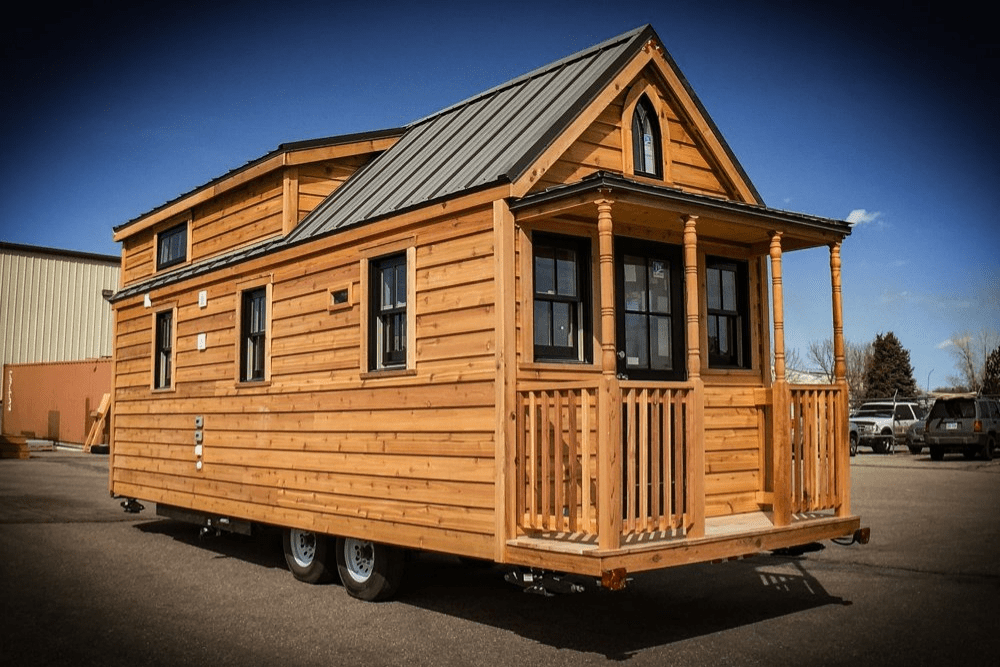
Additional Costs and Considerations
Some costs associated with building a tiny house aren’t as apparent as others and won’t necessarily be anticipated when potential buyers are using a tiny-house cost calculator, but they can add up fast. While the average buyer will pay around $45,000 to build a tiny house, the following factors can add to the cost. Not all tiny-house buyers will pay these costs; some are only associated with tiny houses built on permanent foundations.
Land Surveyor
A survey is usually required for those purchasing a lot or land on which to build unless the property has recently been platted. The survey is used to determine the property’s exact borders, and most surveys will run about $510. This will vary depending on the circumstances; however, the survey could run more if the customer is buying an unplatted section of land from another landowner.
Zoning Laws
Not all communities will allow very small homes to be built on in-town lots. According to Draplin, “Researching local regulations and restrictions on living in a tiny home is essential. Zoning laws may limit where you can park or reside, which poses a challenge for many looking to live tiny.” If the house does not meet specific requirements, such as minimum square footage, it will not be possible to build a tiny house there. Some communities have specially zoned developments with small lots designated just for tiny homes, but zoning requirements rarely allow tiny homes in residential developments alongside larger homes. In general, zoning laws tend to be more restrictive in urban settings than in rural ones.
Prefabricated vs. Custom
Generally, a prefabricated tiny house is already built and is waiting for a buyer. Alternatively, a tiny prefab house may come as a kit in various states of completion. For DIYers, ordering a prefab kit that contains precut lumber and instructions can make it easy to build their own tiny house. A bare-bones model can run as low as $4,000 to $10,000, but it won’t include appliances or fixtures. All-inclusive prefab models with high-end appliances can run as much as $180,000.
On-Grid vs. Off-Grid
When building a tiny home, a customer will need to decide whether the home will be on or off the grid. Off-grid means that the home will not be connected to municipal-owned utilities such as water, electricity, and sewage. Instead, the home will need to rely on alternative sources of energy as well as a septic tank and well water. Solar panels and generators are some of the most common energy sources for off-grid power. In general, it can cost as little as $10,000 or less to go completely off-grid, but it will be imperative for the customer to first check local laws and regulations to make sure the project will be in compliance.
Mortgage, Homeowners Insurance, and Taxes
“If you want to begin a tiny-home build or purchase a resale tiny home, it is good to plan out your finances and begin saving,” says Draplin. “Many banks or lenders need loans or financing options for tiny-home purchases.” If existing homeowners are scaling down from a previous home, they may have the cash from selling their home to purchase a tiny home outright. A mortgage can sometimes be obtained via a tiny-house manufacturer who partners with a financing company for those who need financing.
Traditional lenders typically do not make mortgages on tiny houses, but it may be worthwhile for a customer to check, because policies can vary from lender to lender. “Buyers commonly seek out personal loans from banks, credit unions, or online lenders as an option to begin a tiny-home build,” Draplin explains. “These loans are typically unsecured, meaning they don’t require collateral. Interest rates will vary depending on credit score, income, and the lender’s policies.” Customers will want to consider looking into one of the best tiny-house loans as a financing option. If the tiny home is on a foundation, there will be property taxes. Regardless, a tiny home is an expensive investment and should be insured. Homeowners can expect to pay about $35 to $125 per month, on average, when shopping for one of the best tiny-house insurance policies.
Appliances, Furnishings, Decor, and Storage
The type of appliances, furnishings, and decor the buyer chooses will impact the final cost of a tiny house. Fortunately, tiny homes don’t hold a lot, so buyers will not be able to go too far overboard on furnishings, but the quality of the appliances, windows, and doors will make a difference. Just like a traditional home, splurging on the cost of countertops, fixtures, and other features will raise the project budget. Appliances for a tiny home can cost anywhere from $400 to $4,000, plus an additional $125 to $275 for installation. Customers will want to keep in mind that the cost of kitchen cabinets, appliances, and some other features may be relatively high if they have to be custom-made to fit a smaller space. Many tiny-house owners save money by purchasing furnishings that do double duty as storage, such as a sofa with a drawer or storage bin hidden beneath.
Maintenance, Repair, and Upgrades
Whether big or small, houses require ongoing maintenance and occasional repairs when something wears out or goes wrong. That’s the bad news. The good news is that maintenance and repair costs on a tiny home are a fraction of what they would be for a conventional full-size home. For instance, the cost to paint a house is about $0.50 to $4 per square foot, which translates to over $3,000 for a traditional house, but it will be much lower for a tiny house. Tiny-house owners can expect to pay between $550 and $1,000 annually on repairs. Costs will relate to the quality of the original materials and the workmanship, so, when possible, buyers will want to opt for higher-quality materials over cheaper ones that will wear out sooner.
Resale Value
One of the things no one tells you about tiny houses is whether they appreciate or depreciate in value over time. That’s because the verdict is still out on whether tiny houses are investments that will increase with time or decrease in value like campers. The ultimate resale value will depend on several factors, including the condition of the tiny house when it goes on the market, whether it’s on a foundation or a trailer, and if it’s been well maintained. Studies are still needed to determine probable resale value.
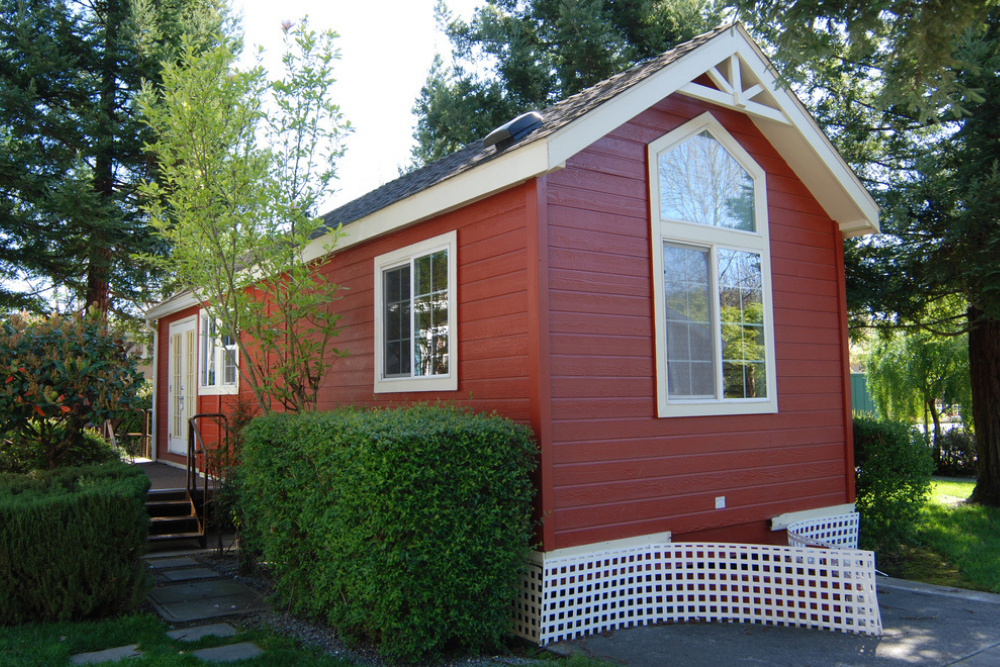
Tiny-House Cost by Type of House
Tiny houses run the gamut in style and cost. The national average tiny-house cost is $45,000, but that’s just a starting point. The type of structure will impact the final price, and not all tiny houses are built the same. The most common type of tiny home is on wheels, but as long as it has less than 400 square feet of living space, other structures can qualify, such as van conversions, bus conversions, and even shipping container conversions. Below are the most common types of tiny houses and their average costs.
| Tiny-House Type | Average Cost (Materials and Labor) |
| Bus conversion | $30,000 to $130,000 |
| Prefabricated | $4,000 to $180,000 |
| Shed conversion | $2,000 to $25,000 |
| Shipping container | $20,000 to $45,000 |
| Tiny house on a foundation | $51,000 to $53,000 |
| Tiny house on wheels | $60,000 to $80,000 |
| Tiny-trailer house | $4,500 to $9,000 |
Bus Conversion
A bus conversion starts as a bus or van, and the owner or a contractor then transforms it into a small living space. Very much like a recreational vehicle, a converted van or bus doesn’t require a large truck to tow it because it has its own motor. The cost to convert ranges from under $30,000 for a basic build to over $130,000 for an upper-range build.
Prefabricated
Buyers can expect to pay anywhere from $4,000 to $180,000 for a prefab tiny house. The cost varies based on whether the buyer orders only a kit, a shell, or a fully finished unit. The cost for a prefab shell can be as low as $15,000 to $40,000, but there will be additional costs associated with finishing the inside whether as a DIY or with the help of contractors.
Shed Conversion
Turning a shed into a tiny house can be a way to save on building the home’s shell, but features like insulation, a bathroom, a kitchen, and electricity will need to be added to make the space liveable. In general, this project costs $2,000 to $25,000.
Shipping Container
Shipping containers can serve as the shell of a tiny house, and these are favorites for DIYers who want to start with walls and then finish out the interior and the exterior. The cost of the finished project varies widely, but many can expect to pay between $20,000 and $45,000 for a converted shipping container.
Tiny House on a Foundation
Whether home buyers are purchasing a standalone tiny home or joining a tiny-house community, tiny permanent houses on a foundation will cost approximately $51,000 to $53,000 and will be in line with the contractor’s fees on other projects. The foundation will add another $5,000 to $8,000 to the cost of purchasing a tiny prefab house and having it put on a foundation. It may also be necessary for a customer to factor in the cost to clear land before the foundation is laid. If a contractor builds the entire thing, the foundation cost will likely be included.
Tiny House on Wheels
Tiny houses on wheels are theoretically portable—as long as they have a sturdy trailer to transport them. This kind of tiny house can cost anywhere from $60,000 to $80,000. Those who want to learn how to build a tiny house on wheels may want to choose a kit or prefab option as a starting point.
Tiny-Trailer House
Tiny-home owners who are interested in a nomadic lifestyle may prefer their home on a trailer. A trailer can cost $4,500 to $9,000, but that does not include the cost of a truck or other vehicle that can tow the trailer.
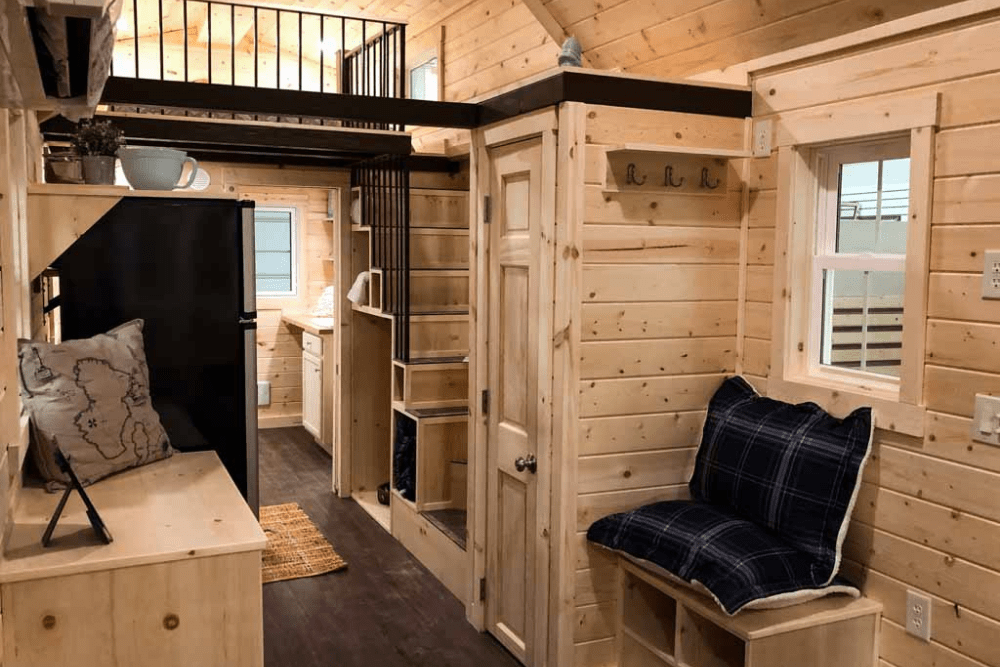
Benefits of Owning a Tiny House
The tiny-house trend is sweeping the nation, and with good cause: Downsizing offers both financial and mental benefits. For one, building a tiny home takes only a fraction of the time it takes to build a traditional house. It also provides new home buyers with an affordable alternative to a cost-prohibitive traditional housing market. It gives others the means to escape the material-driven rat race and sit back and enjoy life.
Financial Savings
It’s not just that a tiny home costs a fraction of a full-size home; homeowners will also benefit from savings on utility costs, property taxes, and the high maintenance costs associated with owning a conventional home. These savings can be used to create a nest egg or to help finance early retirement.
Less Clutter and Cleaning
Big houses require near-constant cleaning, and with today’s active lifestyles, who has the time to mop, dust, and vacuum daily? If the goal is to slow down and enjoy life more, having a tiny house will free up more time for other activities and hobbies. A quick 15-minute cleaning is usually more than sufficient to get a tiny house spic and span.
Mobility
Home is where the heart is, and tiny houses on wheels make a charming nomadic lifestyle possible. A tiny house can be put on a foundation, making it a permanent abode, but most tiny houses are portable and can be pulled anywhere. Once the owner is ready for a change of scenery, they can just hook up the truck and go.
Sustainability
Homeowners who opt to live in a tiny house are choosing a more eco-friendly method of homeownership. Tiny houses require a fraction of the energy needed to heat and cool, and they contain far fewer materials that are not sustainable. For eco-conscious buyers, a reduced carbon footprint is a significant reason for investing in a tiny house.
Tiny-House Building: DIY vs. Hiring a Professional
Prefab tiny-house manufacturers target the DIY crowd by offering tiny-house kits for sale in various stages of completion. Some require quite a bit of work, while others don’t. Some kits come with excellent instructions, while other manufacturers expect the DIYer to have construction knowledge.
For those who have worked in the building trades, DIY-ing a tiny house can be doable, but before going it alone, consider the following issues. Suppose the home will be constructed on a foundation. In that case, the local building authority will likely have some rules to comply with, such as having licensed professionals do the electrical wiring, plumbing, and HVAC work. According to Draplin, “Hiring a professional cottage builder instead of taking a DIY approach can offer several benefits. Professional builders have experience and expertise, along with specialized knowledge in constructing homes. They understand the structural integrity and design considerations when building a housing structure. Experts also have the necessary tools and resources to complete the project more efficiently. They may even offer warranties and support when needed in the future.”
Before taking the plunge and learning how to build their own tiny house, customers will need to understand that there won’t be a warranty to rely on if any costly mistakes are made. Often, a contractor will offer a 1-year guarantee on workmanship. In addition, it takes quite a bit of time to construct a tiny house. After all, all the elements present in a traditional home are included—they’re just scaled down. Scaling down requires precision and skill, and most tiny-home buyers will be happier if they leave the construction to the pros.
How to Save Money on Tiny-House Cost
Those who are in the market for having a tiny home built but want to save a bit while still enjoying the benefit of having a local professional handle the construction will want to consider the following tips.
- Source your own materials. When a contractor purchases the materials to build a tiny house, they will typically charge a service fee of around 10 percent of the cost of the materials. By ordering (and picking up) the materials yourself, you can avoid that fee.
- Start with used appliances and furnishings. Scaled-down fridges, freezers, and tiny showers often cost more than their standard big brothers, but construction reuse-it centers can turn up a wealth of used-but-still-OK small fixtures. You can always update later.
- Do some of the work yourself. It may not be possible to avoid the cost to frame a house or to avoid paying for wiring, plumbing, and ductwork, since these are best left to the pros. However, consider installing the roof shingles, taking on the exterior house painting, or sealing and weatherproofing if you have some building knowledge.
- Keep the design simple. Some tiny houses are works of art. If function is more important to you than appearance, though, opt for a more straightforward design that will save you some money.
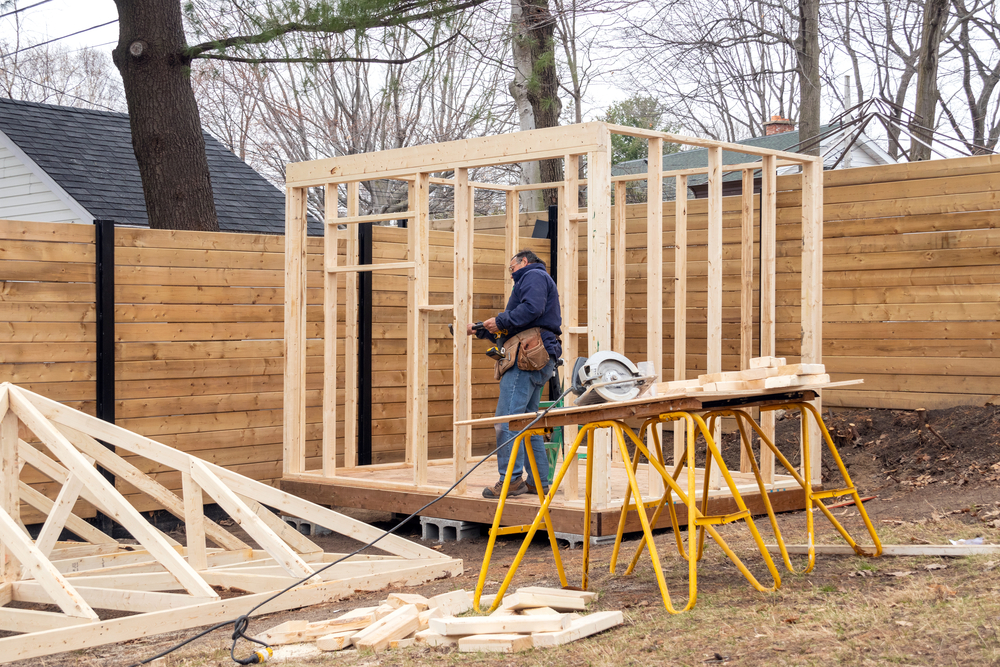
Questions to Ask About Tiny-House Construction
After deciding to build a tiny house, it’s time for the customer to start meeting with contractors or manufacturer reps. It’s a good idea for the customer to help ensure a smooth process by asking a few pertinent questions.
- How long will the project take? It’s a seemingly obvious question, but the answer is important to know if you’re planning on moving into your tiny home on a specific timeline.
- Do you offer financing? If you’re unable to pay cash for the tiny house, this should be the first question. A small local builder may not be able to finance the project, but a more prominent manufacturer, such as Tumbleweed Tiny House Company, can often provide financing.
- What is the final cost I can expect to pay? When perusing tiny-home websites, you will likely see costs associated with different models. These costs typically are not representative of what you will eventually pay. They often do not include appliances, furnishings, or the cost to connect the tiny home to utilities.
- Do you customize floor plans? Tiny-house manufacturers will publish a dozen or so tiny-house designs, but if none suit your situation, don’t be afraid to ask about customizing. In many cases, a sleeping loft can be added or a larger kitchen installed. Find out and get a firm quote for the requested changes.
FAQs
Tiny houses are trending, and they offer a simplified, decluttered lifestyle. Still, they aren’t the solution to everyone’s housing issues. Some questions are to be expected from those seriously looking at building a tiny home and adopting a scaled-down lifestyle.
That all depends on the quality of the house and whether it’s a custom build or a prefab. In most cases, tiny-home buyers can expect to pay between $30,000 and $60,000 for a tiny home, whether they buy a completed one or have one built.
While no states have outright bans on tiny houses, some states welcome them more than others. Before buying a tiny house, contact the local building authority of the community where you want to live to find out if they’re welcome.
The nationwide average is $45,000, but that can vary depending on the size, quality of materials, and additional costs, such as permits, inspection fees, and the cost to build a foundation if desired.
A well-built tiny house should last just as long as a traditional house, but keep in mind that it will need routine maintenance and occasional repairs. The quality of materials and workmanship factor into the tiny home’s useful life as well.
For $5,000, you may be able to purchase a bare-bones tiny-house kit and DIY the project, but it won’t include all the amenities, such as wiring, insulation, and interior appliances and finish.
Sources: HomeAdvisor, Angi, Fixr, HomeGuide
